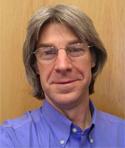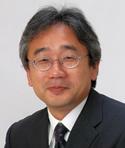Brian Derby
Professor of Materials Science, University of Manchester, School of Materials, Manchester, UK
Education:
BA: Natural Sciences (Metallurgy and Materials Science), University of Cambridge, UK (1978).
Ph.D: Metallurgy and Materials Science, thesis title – Theoretical Model for Diffusion Bonding, University of Cambridge, UK (1981).
Employment:
Current Employment: Professor of Materials Science, University of Manchester, School of Materials, Manchester, UK (1999-present).
Previous Employment: Senior Research Fellow (1985-1987), Lecturer (1987-1995), Reader (1995-1998), Director of Oxford Centre for Advanced Materials and Composites (1995-1998), Department of Materials, University of Oxford, Oxford, UK. Research Fellow, Department of Engineering, University of Cambridge, UK, (1982-1984). European Space Agency Research Fellow, Centre d’Études Nucleaire de Grenoble, Grenoble, France, (1981-1982).
Accomplishments:
Authored/coauthored 286 technical papers, 2 patents, 1 undergraduate textbook. Edited 1 conference volume. Primary research fields: mechanical properties of ceramics, microfabrication using inkjet printing. “Edward de Bono Medal for Thinking”, part of the Saatchi and Saatchi Awards for World Changing Ideas (2008).
Chair of the Gordon Conference in Solid State Studies in Ceramics (2005).
Elected Academician, World Academy of Ceramics (2004). American Ceramic Society (member since 1987): Member of Basic Science and Engineering Ceramics Divisions, Member of publications (books) committee, Associate Editor of the Journal of the American Ceramic Society.
Statement:
If elected to the post of Secretary of the Basic Science Division of the American Ceramic Society, I would use my position to improve the international links of the Division and to encourage greater involvement of members based outside the USA with Division activities including taking part in meetings and proposing symposia. I personally have an interest in a wide range of research topics in ceramics and related areas of materials science and a particular interest in their unifying scientific principles. The Basic Science Division provides support for those working in the basic underpinning of ceramic science and I believe my background will help further its aims.
 Kevin Trumble
Kevin Trumble
Professor of Materials Engineering, Purdue University, W. Lafayette, IN USA
Biographical Information:
Kevin Trumble received BSE and MSE degrees in Materials and Metallurgical Engineering from the University of Michigan (1985) and a PhD in Materials from the University of California, Santa Barbara (1990). As a student he worked for Howmet Castings, Whitehall, MI and then for General Motors Research, Warren MI, where he became interested in ceramics. He joined the faculty of the School of Materials Engineering at Purdue University as Assistant Professor in 1991 and was promoted to Associate Professor in 1996 and Professor in 2000. He and his students have published over 85 papers and he is a co-inventor on 6 issued patents. His primary research and teaching is in materials processing, especially powder and solidification processing, along with thermochemistry, wetting and capillarity in ceramic and ceramic-metal systems.
Kevin Trumble has been a member of ACerS since his student days, affiliated primarily with the Basic Science Division. He served on the Executive Committee of the Ceramic Educational Council (CEC) 1995-99 (President, 1998-99).
Statement:
In nearly 18 years on the Materials Engineering faculty at Purdue, I have served in a wide range of academic and administrative leadership roles, including ten years as chair of the MSE undergraduate program and nine years on the College of Engineering promotion committee. In each of these roles I have lead efforts to improve operational processes that benefited the constituencies served. I also gained valuable experience in serving on the Executive Committee of the Ceramic Educational Council and in co-organizing, through ACerS, the International Conference on Functionally Graded Materials, FGM 2000. My research has spanned a wide range of ceramics phenomena and has often bridged ceramics and metals. I would bring a similar broad-based perspective to promoting ceramic science as Basic Science Division Secretary.
 Koji Watari
Koji Watari
Group Leader, Advanced Sintering Technology Group, National Institute of
Advanced Industrial Science and Technology (AIST)
Biographical Information:
Leader and senior research scientist in the Advanced Sintering Technology Group, National Institute of Advanced Industrial Science and Technology (AIST). His research focuses on forming and sintering of advanced ceramics with high performance and green processing technology of ceramics to reduce applied energy. He also studies development and evaluation of high thermal conductivity ceramics.
He received his BS, MS, and D.Eng in Materials Science and Engineering, all from Nagaoka University of Technology, Nagaoka, Japan. After receiving his PhD, he worked at the National Industrial Research Institute of Nagoya (NIRIN), Japan as a research scientist between 1990 and 2000, and also worked as a PostDoc with Prof. Gary Messing in the Materials Research Laboratory at The Pennsylvania State University, PA, USA, from 1998 to 1999, and Ministry of International Trade and Industry (MITI), Japan from 1999 to 2000. Watari has authored more than 250 publications and holds 30 patents in materials engineering, and has organized nine international symposia. He was chosen as Guest Editors of MRS Bulletin, USA, June 2001 on title “High Thermal Conductivity Materials” with Dr. S.L. Shinde, (IBM), and Journal of Ceramics Society of Japan, February and March, 2008. He serves as an associate editor of Journal of the American Ceramic Society, and is a member of the editorial board of the Advances in Technology of Materials and Materials Processing Journal (ATM), Ceramic International, Bulletin of Ceramic Society of Japan and Material Integration.
Watari has received the Young Investigator Award of Ceramic Society of Japan in 1997, Academic Award of the Nagai Science and Technology Foundation in 2002, Richard M. Fulrath Award of The American Ceramic Society in 2006, Achievement Award of Japan Society of Powder and Powder Metallurgy in 2007, Kazuchika-Ohkura Memorial Foundation Prize in 2008 and “Seven Best Paper” awards from international and domestic conferences.
He is a member of the The American Ceramic Society, the Material Research Society, the Ceramic Society of Japan, Japan Society of Powder and Powder Metallurgy and Japan Society of Thermophysical Properties.
Statement:
I clearly remember the Annual Meeting of ACerS in 1996, when I attended for the first time. The atmosphere of the meeting was very exciting. I had considerable pleasure in having the opportunity to discuss issues with leading scientists, and gained knowledge about the present highlights and future directions in advanced ceramics. However, in recent years, there has been a significant decrease in the number of participants attending the meeting. The market for advanced ceramics and related products has certainly been expanded. The research scientists and engineers of the industry have been looking forward to our progress. What is wrong? Without doing basic science research, technological achievements and improvements are difficult. The reason why the members leave our society is the lack of attractiveness of symposia, the loss of leading scientist to other societies and so on. At present, we should seriously re-consider the direction we are heading, and the role of the basic science division in turning the situation around. In order to support the activities of the division, if I am elected, I will stick to the following strategies.
(a) Meet the industry’s new technology needs by encouraging basic science research via our division.
(b) Basic science division picks up and supports newly emerging ceramics, related materials research, new approach and trends at the early development stage.
(c) Support the new trends in new ceramic’s function and ceramic processing by encouraging basic science research and gain fundamental understanding on the issue.
(d) Basic science division seeks young and promising candidate scientists who have the ability to lead to new research fields and coordinate symposia.
(e) Basic science division encourages young scientists and scientists abroad in doing scientific research.
I am looking forward to the opportunity to be able to contribute to the direction, success, and growth of basic science division.

